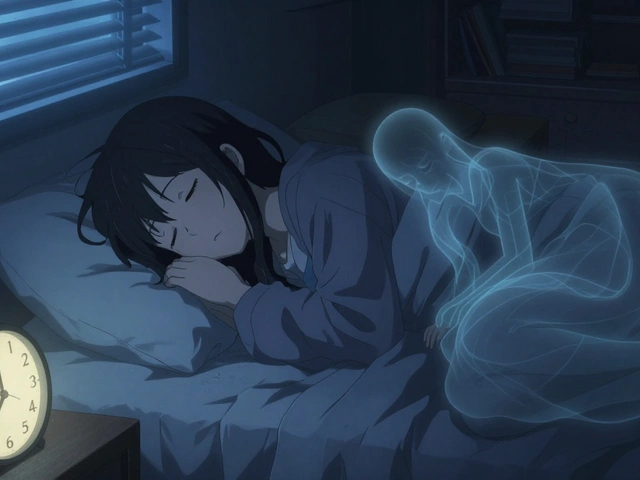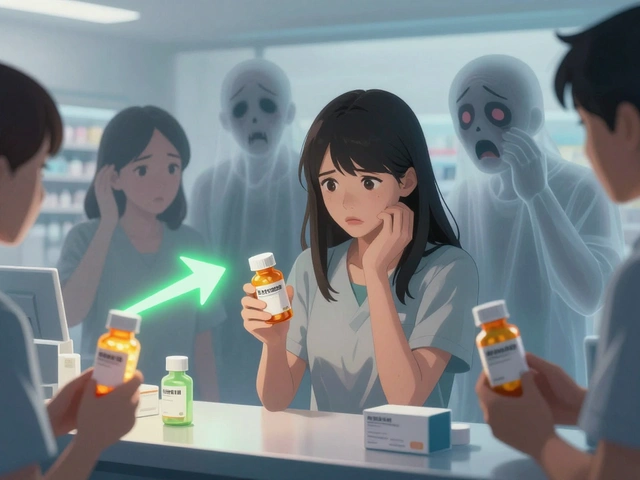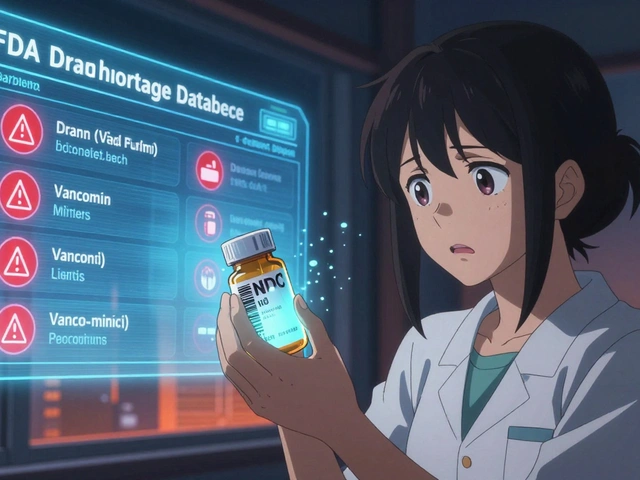Eye swelling from insect bites is a localized inflammation of the eyelid and surrounding tissue caused by venom or irritant proteins delivered when insects such as bees, mosquitoes, or ants bite or sting the eye area. It looks alarming - a puffed‑up lid, redness, sometimes itching or burning - and you’ll want to act fast. Below is a step‑by‑step guide that helps you reduce eye swelling without a trip to the pharmacy, plus clear signs when professional care is necessary.
What Triggers the Swelling?
Understanding the culprit makes treatment easier. The most common insects that affect the eye are:
- Bee sting - delivers a potent mix of melittin and phospholipase A2, which can cause rapid tissue swelling.
- Mosquito bite - injects saliva containing anticoagulants that provoke a mild allergic reaction.
- Ant bite - especially fire ants, which release acidic venom causing intense inflammation.
All three share a core mechanism: the body’s immune system releases histamine, prostaglandins, and cytokines, leading to fluid buildup in the eyelid’s delicate tissue.
First‑Aid Steps You Can Do Right After the Bite
- Stay calm and avoid rubbing the eye - friction spreads venom deeper.
- Gently wash the area with cool, sterile water to remove any remaining stinger fragments.
- Apply a Cold compress - a clean cloth soaked in chilled water or wrapped ice cubes - for 5‑10minutes. This constricts blood vessels, slowing fluid leakage.
- If you have a known allergy, consider an oral Antihistamine (e.g., cetirizine 10mg). It blocks histamine receptors, reducing itching and swelling.
These actions buy you time while your body settles the reaction.
Home Remedies: What Works Best?
Not all treatments are equal. Below is a quick comparison of the most popular DIY options.
| Remedy | Onset Speed | Cost (AU$) | Eye Safety |
|---|---|---|---|
| Cold compress | 5‑10min | 0‑5 | Very safe - no chemicals |
| Antihistamine (oral) | 30‑60min | 5‑10 | Generally safe; avoid if pregnant without doctor advice |
| Corticosteroid cream (e.g., 1% hydrocortisone) | 15‑30min | 10‑20 | Safe for short use; do not apply inside the eye |
| Lubricating eye drops | 5‑10min | 8‑15 | Specifically formulated for ocular tissue |
For most mild reactions, a cold compress combined with an oral antihistamine gives the fastest relief. Reserve steroid creams for stubborn swelling that doesn’t improve after 12‑hour intervals.
How to Apply Each Remedy Properly
- Cold compress: Wrap ice in a thin towel; never press directly on the skin. Apply to the eyelid while keeping the eye closed.
- Antihistamine: Swallow with water after meals. Do not exceed the recommended daily dose.
- Corticosteroid cream: Use a pea‑sized amount on the outer lid only. Wash hands before and after application.
- Lubricating drops: Tilt head back, pull down the lower eyelid, and place one drop. Blink several times to spread the film.
When to Seek Professional Medical Help
If any of the following appear, it’s time to see a doctor or visit an urgent care clinic:
- Vision becomes blurry or double.
- Severe pain that intensifies after 2‑3hours.
- Rapid spreading of redness beyond the eyelid (possible cellulitis).
- Signs of systemic allergic reaction - hives, wheezing, throat tightness (anaphylaxis).
- Swelling that persists beyond 48hours despite home treatment.
Medical professionals may prescribe stronger oral steroids, prescription‑strength antihistamines, or antibiotics if a bacterial infection is suspected.

Related Conditions Worth Knowing
Eye swelling from insects can be confused with other ocular issues:
- Allergic conjunctivitis - inflammation of the conjunctiva caused by pollen or pet dander; typically involves watery discharge.
- Blepharitis - chronic eyelid inflammation often linked to bacterial overgrowth; symptoms are crusting and irritation, not sudden swelling.
- Orbital cellulitis - a serious infection of the eye socket; presents with fever, pain on eye movement, and proptosis (eye bulging).
Understanding these differences helps you decide whether home care is enough or a clinician’s eye is needed.
Prevention: Staying One Step Ahead
- Wear sunglasses or protective goggles when outdoors during summer evenings - they act as a barrier against stray insects.
- Apply insect‑repellent (DEET‑based or picaridin) to the skin around the eyes, taking care not to get it in the eye itself.
- Keep windows fitted with fine mesh screens; repair any tears promptly.
- If you’re allergic to bee or wasp venom, carry an epinephrine auto‑injector and wear a medical alert bracelet.
These steps reduce the chance of a bite and also lower the severity if an encounter does happen.
Quick‑Reference Checklist
- Step1: Clean the eye with cool water.
- Step2: Apply a cold compress for 5‑10minutes.
- Step3: Take an oral antihistamine if itching persists.
- Step4: Use lubricating drops to keep the surface moist.
- Step5: Reserve steroid cream for swelling that lasts >12hours.
- Step6: Seek medical help for vision changes, severe pain, or systemic allergy signs.
Next Topics to Explore
Now that you know how to manage eye swelling, you might want to read about:
- “How to Treat Insect Bites on Sensitive Skin” - broader skin care after stings.
- “Understanding Anaphylaxis: When to Use an EpiPen” - for severe systemic reactions.
- “Choosing the Right Sunscreen for Eye Protection” - preventing UV‑related eye irritation.
Frequently Asked Questions
Can I use a regular ice pack on my eye?
Yes, but wrap it in a thin cloth first. Direct ice can frost the delicate skin and cause irritation. A cloth also spreads the cold more evenly.
Are antihistamines safe for children?
Children over six can usually take a pediatric‑dose of cetirizine or loratadine. For younger kids, consult a pediatrician before giving any medication.
Should I apply steroid cream directly to the inside of my eyelid?
Never. Steroid creams are meant for the outer skin only. Applying them inside the eye can cause cataracts or increased intra‑ocular pressure.
How long does normal eye swelling last?
Mild swelling from a mosquito bite usually resolves within 24‑48hours with basic care. Bee or ant stings may linger up to 72hours if untreated.
Can I use over‑the‑counter allergy eye drops?
Yes, antihistamine eye drops (e.g., ketotifen) can soothe itching and redness. Ensure they’re preservative‑free to avoid further irritation.





Sajeev Menon
September 22, 2025 AT 01:51Wow, dealing with eye swelling from bugs can feel like a mini panic attack.
First thing you wanna do is stop touching the area, because friction just shoves more venom deeper.
Rinse the eyelid gently with cool, sterile water – a soft stream does the trick.
Then grab a clean cloth, dunk it in fridged water and apply as a cold compress for about eight minutes; this narrows the blood vessels and buys you time.
If you’re not allergic to antihistamines, popping a 10 mg cetirizine pill can cut down the histamine surge.
For those who prefer a natural route, a chilled tea bag (black tea works best) can act as a mild anti‑inflammatory.
Remember, never rub the eye; the mechanical action can cause micro‑abrasions and make infection more likely.
If the swelling doesn’t start to shrink after half an hour, it’s okay to re‑apply the cold compress for another five minutes.
When you’re dealing with a bee sting, keep an eye out for sudden expansion beyond the lid – that could mean a bigger allergic reaction.
In that case, having an epinephrine auto‑injector handy is a lifesaver, especially if you have a known severe allergy.
For ant bites, the acid‑rich venom can cause a burning sensation; a dilute baking soda paste (one part soda to three parts water) may soothe the skin, but keep it away from the actual eyeball.
Steroid creams like 1 % hydrocortisone are okay on the outer skin, but limit usage to a pea‑size dab and never let it seep into the eye.
Lubricating drops not only keep the surface moist but also wash away any lingering irritants.
If after 12‑hour intervals there’s still a puffy lid and the pain is getting worse, consider a short course of oral steroids prescribed by a doctor.
And always watch for red‑flag signs: blurry vision, intense pain, spreading redness, or any signs of anaphylaxis such as hives or breathing trouble.
When any of those pop up, skip the home tricks and head straight to urgent care – your eyes are too precious to gamble with.
Emma Parker
September 29, 2025 AT 13:51Hey buddy! This guide is super helpful and I totally agree with the cold compress tip – it’s like a mini‑freeze for the eye! Also, don’t forget to keep your hands clean before you touch anything near the eye, that always helps me avoid extra irritation. Keep it up, folks! 😊
Joe Waldron
October 7, 2025 AT 01:51Good info, very thorough; however, a few clarifications: the cold compress should be applied for exactly five to ten minutes – not longer, to avoid tissue damage. Also, when using antihistamines, ensure they are taken with food; otherwise, stomach upset may occur. Lastly, avoid steroid creams on the eyelid for more than three days – prolonged use can thin the skin.
Joanne Ponnappa
October 14, 2025 AT 13:51Nice summary! 👍 Simple steps make it easy for anyone to follow, especially the part about not rubbing the eye. Using a clean cloth instead of ice directly is a good safety tip. Keep the advice coming! 😊
Michael Vandiver
October 22, 2025 AT 01:51Love how you broke it down! 😄 The checklist is perfect for quick reference, and the emojis make it fun. I always keep a cold compress ready in my fridge – saves time when the unexpected sting hits! 🎉
Emily Collins
October 29, 2025 AT 13:51The sting felt like a fireworks display exploding across my eyelid!
Harini Prakash
November 6, 2025 AT 01:51Great guide! :) I’ve tried the cold compress and it really helped calm the swelling. Also, a quick tip: a dab of aloe vera gel on the outer lid (not in the eye) can provide extra soothing. Keep up the good work! ;)
Suryadevan Vasu
November 13, 2025 AT 13:51Swelling reflects the body's attempt to isolate venom; minimizing external stimuli accelerates resolution. A measured cold application reduces vascular permeability without compromising ocular integrity.
Iris Joy
November 21, 2025 AT 01:51This is really useful, especially for people who aren’t sure what to do immediately after a bite. I’d add that keeping a small first‑aid kit in your bag – with a sterile compress and antihistamine tablets – can make the response even faster. Also, don’t forget to monitor for any signs of infection over the next day.
Sarah Riley
November 28, 2025 AT 13:51While the protocol is sound, note that the pharmacodynamics of cetirizine peak at 1‑2 h, which may delay symptomatic relief in acute ocular edema.
Wade Grindle
December 6, 2025 AT 01:51The emphasis on avoiding direct ice contact is critical; frostbite risk outweighs marginal cooling benefits.